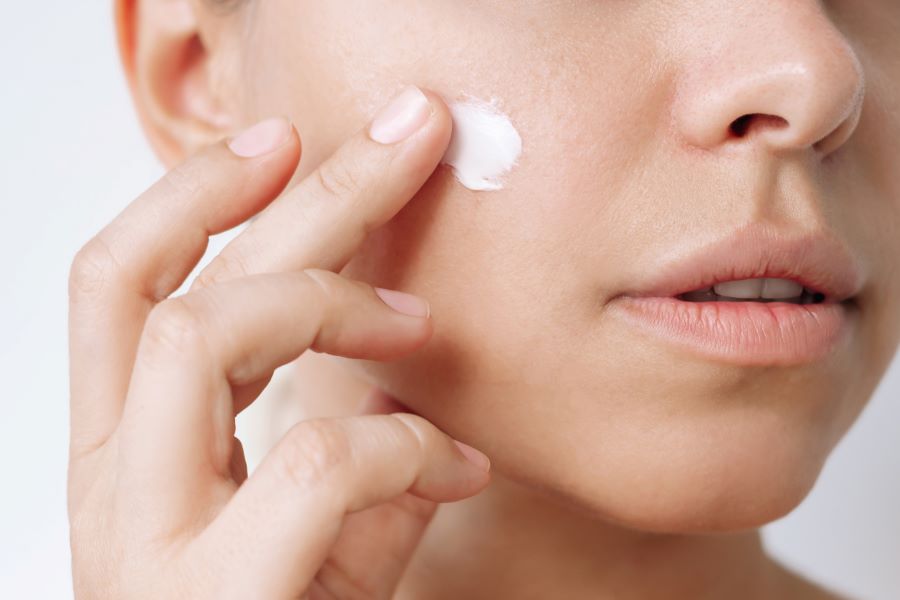Skin Cycling: The Revolutionary Nighttime Skincare Routine
The beauty industry is constantly evolving, with new trends and techniques emerging at a rapid pace. Among these innovations, skin cycling has garnered significant attention as a revolutionary approach to nighttime skincare. This method, which involves strategically rotating active ingredients throughout the week, promises to optimize skin health and address multiple concerns simultaneously. Skin cycling has quickly become a buzzword in the beauty community, with dermatologists, skincare enthusiasts, and celebrities alike singing its praises. But what exactly is skin cycling, and why has it taken the skincare world by storm?

The concept draws inspiration from the principles of athletic training, where rest days are incorporated into workout routines to allow for muscle recovery and prevent overexertion. Similarly, skin cycling aims to provide periods of rest and recovery for the skin between the application of more intensive treatments. This approach aligns with the growing understanding of the skin’s natural regeneration cycle and the importance of supporting its inherent healing processes.
The Fundamentals of Skin Cycling
At its core, skin cycling involves a four-night rotation of different skincare products and treatments. The typical cycle consists of:
-
Night 1: Exfoliation
-
Night 2: Retinoid application
-
Night 3: Recovery
-
Night 4: Recovery
This cycle is then repeated, creating a consistent and balanced skincare routine. The exfoliation night focuses on removing dead skin cells and unclogging pores, preparing the skin for subsequent treatments. The retinoid night introduces a powerful active ingredient known for its anti-aging and skin-renewing properties. The two recovery nights allow the skin to rest and repair itself, emphasizing hydration and barrier support.
The Science Behind Skin Cycling
The effectiveness of skin cycling is rooted in the understanding of skin biology and the mechanisms by which different active ingredients work. Exfoliation, whether chemical or physical, helps to remove the outer layer of dead skin cells, improving skin texture and allowing better penetration of subsequent products. Retinoids, derivatives of vitamin A, are known to increase cell turnover, stimulate collagen production, and improve overall skin appearance.
However, both exfoliation and retinoid use can potentially irritate the skin if used too frequently or in high concentrations. The recovery nights in the skin cycling routine provide a crucial period for the skin to repair and strengthen its protective barrier. This rest period helps to mitigate potential side effects such as redness, dryness, or peeling that can occur with regular use of active ingredients.
Research in skin biology has shown that the skin’s natural renewal process occurs approximately every 28 days. By aligning the skincare routine with this cycle, skin cycling aims to support and enhance the skin’s natural rhythms. Furthermore, alternating between different active ingredients allows for a more comprehensive approach to skincare, addressing multiple concerns without overwhelming the skin.
Benefits and Potential Drawbacks
Proponents of skin cycling report numerous benefits, including improved skin texture, reduced acne breakouts, and a more even skin tone. The method is particularly praised for its ability to introduce powerful active ingredients to those with sensitive skin or those new to using retinoids. By providing regular recovery periods, skin cycling may help to build tolerance to active ingredients over time.
Another advantage of skin cycling is its simplicity and adaptability. The basic framework can be customized to suit individual skin types and concerns, making it accessible to a wide range of users. It also encourages a more mindful approach to skincare, prompting users to pay closer attention to their skin’s needs and responses.
However, it’s important to note that skin cycling may not be suitable for everyone. Those with specific skin conditions or those already using prescription skincare products should consult with a dermatologist before implementing this routine. Additionally, some critics argue that the rigid structure of skin cycling may not be necessary for all skin types and that a more flexible approach could be equally effective.
Impact on the Beauty Industry
The rise of skin cycling has had a significant impact on the beauty industry, influencing product development, marketing strategies, and consumer behavior. Many skincare brands have begun to formulate products specifically designed to fit into the skin cycling routine, such as gentle exfoliators and nourishing recovery creams. This trend has also led to an increased focus on educating consumers about the importance of a balanced skincare routine and the potential risks of overusing active ingredients.
The popularity of skin cycling has contributed to a shift in consumer attitudes towards skincare. There is a growing emphasis on long-term skin health rather than quick fixes, and a greater appreciation for the complexities of skin biology. This has led to more informed and discerning consumers who are willing to invest time and effort into understanding their skin’s needs.
The Future of Skin Cycling
As skin cycling continues to gain popularity, it is likely to evolve and adapt based on new research and consumer feedback. There is potential for the development of more personalized approaches to skin cycling, potentially incorporating factors such as age, skin type, environmental conditions, and lifestyle factors. Technology may play a role in this personalization, with apps and devices helping users to track their skin’s progress and adjust their routines accordingly.
The principles underlying skin cycling may also find applications beyond facial skincare. There is growing interest in applying similar concepts to body care, haircare, and even makeup routines. As our understanding of skin biology and the interactions between different skincare ingredients continues to advance, we may see further refinements and variations of the skin cycling method.
In conclusion, skin cycling represents a significant shift in the approach to skincare, emphasizing balance, recovery, and long-term skin health. While more research is needed to fully understand its long-term effects and optimal application, its popularity and reported benefits suggest that it may become a lasting trend in the beauty industry. As with any skincare routine, individual results may vary, and it’s always advisable to consult with a dermatologist or skincare professional when making significant changes to one’s skincare regimen.





